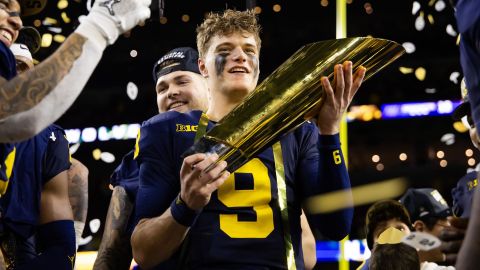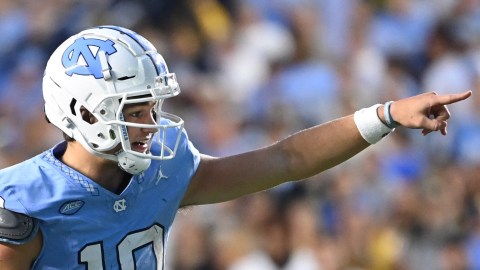 The New England Patriots’ notoriously heavy offensive playbook isn’t the only challenge young receivers face when they enter Gillette Stadium.
The New England Patriots’ notoriously heavy offensive playbook isn’t the only challenge young receivers face when they enter Gillette Stadium.
Patriots director of player personnel Nick Caserio placed some blame on the simple college offenses that are run today.
“One of the things that has come into play (in college football) is the use of high-frequency, high-tempo offense,” Caserio told reporters Wednesday at Gillette Stadium. “So you run a play, you sprint to the line and get a play off within five to 10 seconds. So the player stays in one spot. Chances are the player is repeating the same play. The complexity of coverages, defensively, I would say is minimal because you can’t have a lot of calls defensively to combat the pace and speed of what a team is doing offensively.
“I would say the number of teams that actually play at the line of scrimmage defensively on a consistent play-by-play basis is very small, so the majority of the time, the defender is five, six, seven yards off so he has free access into the defense, so there’s less (the receiver) has to deal with at the line of scrimmage. Now you fast-forward, when I would say the majority of the time (in the NFL), you’re going to have a defender in your face at the line of scrimmage on the perimeter or in the slot as well.”
NFL teams like to select receivers who have proven, albeit on a limited basis, that they can run past a pressing cornerback. The Patriots also ask their receivers to memorize routes based on how the defense is lined up, so they will run a different route based on how a cornerback is playing or how a safety is aligned.
Patriots rookie tight ends have had an easier time adapting through the years, but there still are challenges in adjusting from the college game to the pros.
“The tight end position is different, but some of these tight ends are detached from the line of scrimmage 95 to 100 percent of the snaps,” Caserio said. “Well, the likelihood of that player actually doing that on a 70-snap game basis is minimal. He’s going to be on the line of scrimmage, maybe he’s detached or flexed out slightly.
“It takes a little time to understand that and learn that with the simplicity of some of the colleges, that’s just what they’re dealing with on a weekly basis. So we can’t change that, but what you hopefully are able to do is project and say based on his physical attributes, he may be able to do it, or he may have a hard time doing it. Or mentally, he’s a little bit of a slower processor. Those are some of the things that come into play, I would say, at those two positions.”
The Patriots should be in the hunt for a tight end in the 2014 NFL draft. Some players, such as Washington’s Austin Seferian-Jenkins or Iowa’s C.J. Fiedorowicz, are accustomed to playing on the line in a traditional tight end role, while North Carolina’s Eric Ebron and Texas Tech’s Jace Amaro were split out at receiver on most snaps.
The Patriots must determine if players who aren’t accustomed to playing on the line have the physical tools to play in their offense.




